Do you have a small garden or courtyard that you’d like to be native? This article outlines the types of small gardens and coutyards, as well as how to design small native gardens and courtyards.
Why small gardens and courtyards are increasingly prevalent
For many Australians, living in a house on a small lot, an apartment in a high rise tower, in a block of flats or a gated community is a fact of life. And it will become more prevalent as our population expands and space becomes more limited. We have been spoilt over the past century to expect it is our right to own a sizeable piece of Australia, at least a quarter of an acre or 1,000 square metres. And on it we build our home, raise a family and establish a garden. Unfortunately, those sylvan times have long gone, and today the emphasis is on small and intense.
To clarify – a ‘very small garden’ is one established on a small lot, say 300 – 800 sq metres or in a courtyard.
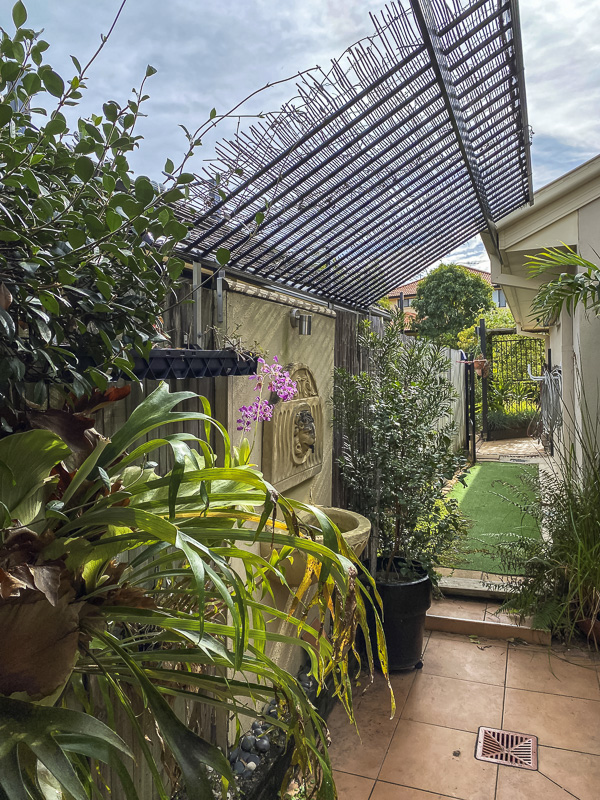
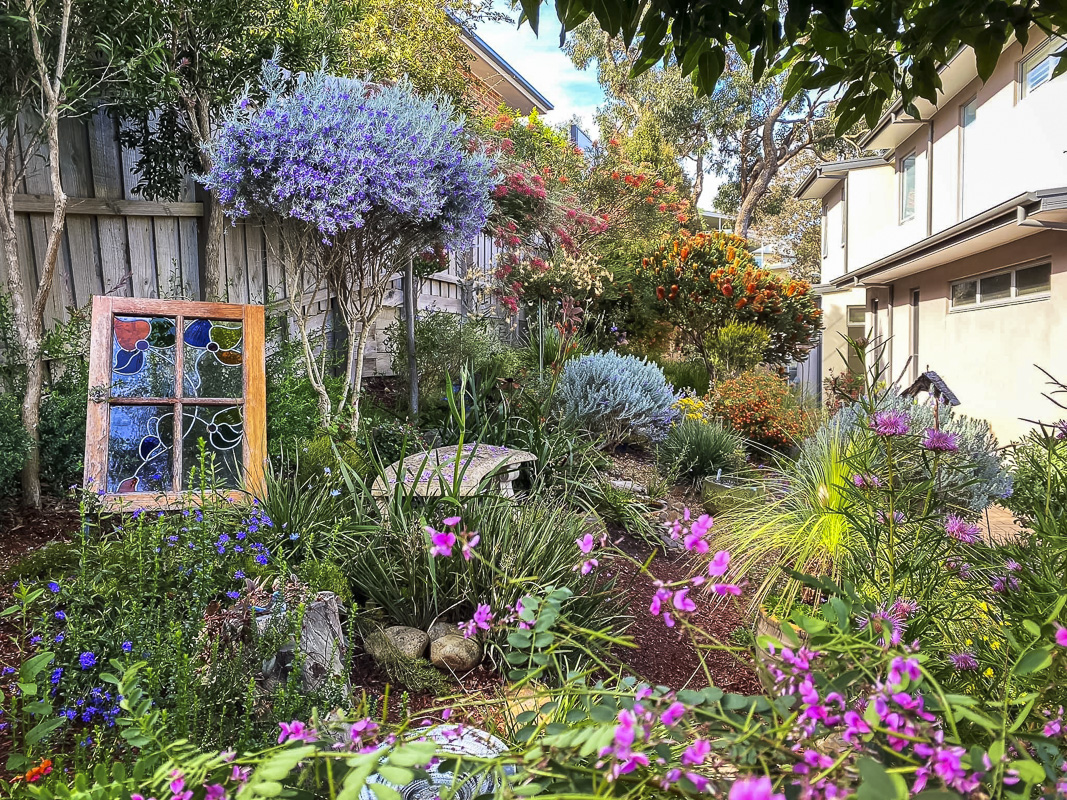
There are many differing types of small gardens and courtyards
- You might have a special small ‘garden room’ or courtyard within your larger expansive garden
- You might have a townhouse courtyard garden
- Perhaps you have a veranda or roof top apartment garden
- Maybe you have a vertical ‘green wall’ garden enriching the one metre wide sunless space between your house and the one next door
- You could even have a collection of potted plants that have been arranged closely together to form a ‘garden’ in your rented property
- Or is your garden really miniature and created by a bonsai collection?
Whatever the style, it is obvious that the same design principals apply no matter what the size. Sure there will be some modification necessary relative to size and scale, but after all a garden is a garden, a practical, attractive and relaxing environment that you can create and manage.

Designing your small native garden and courtyard
Solving problems
A good design generally starts with a problem resolved. Generally as native plant enthusiasts, we want to establish an ‘Australian Style’ small native garden. However, we have to remember the word ‘scale’. Our typical large forest trees will be far too large for a small garden. But that opens a treasure trove of small trees and tall shrubs to select from as a replacement for a towering Eucalypt or Kauri Pine. This is only one problem resolved there will be many others to consider and solve.
Simplicity
Whatever the garden scale, memorable designs are not fussy or complex, they are very simple! Ensure that your small garden is planned as a simple design that reflects your main area of interest in native plants and a related landscape. Simplicity in all aspects – hardscape elements as well as softscape elements – is even more necessary in a small garden! This means simple, integrated construction materials with a simple colour palette. Although you may consider one vibrant contrasting colour, carefully used to give impact and focus?
Views
Gardens created in a small space and crowded among other adjacent houses will most likely have a strong sense of enclosure without too much interaction with the surrounding open spaces. If there are positive views, no matter how narrow, be sure to plan the garden to encourage views out and give visual connection to the wider landscape – this can expand the apparent size of the garden.
Microclimate
The most important, even fundamental, principle is to consider the microclimate, this is even more relevant in a small garden. Be sure to understand the changing pattern of sunshine and shadow across the garden as the seasons revolve, and from morning until night. On a drawing of the garden site, record the pattern of full sun in mid-summer and in mid-winter at 9am and 3pm – from this you can derive the extent of and changes in garden exposure to full sun and full shade throughout the year, which will inform your plant selection. Make sure you know the direction of North!
Movement
Another important aspect is air movement, where impact on a small garden can be far more severe. Be sure to plan the garden to admit cooling afternoon summer breezes but exclude or deflect cold boisterous winter winds. Remember in high density housing situations air movement will be random, channelled between other structures. Streets of townhouses can become wind tunnels!
Trees
In small lot subdivisions there will be minimal space for shade trees and these will primarily be as avenues in the street corridors. Small back yards may have space for one or maybe two small trees, so shade structures or vine arbours may be the answer. Make sure you analyse the seasonal changing sun directions to inform placing the tree or shade device in just the right location to provide the sun control you need – do you want winter sun or summer shade?
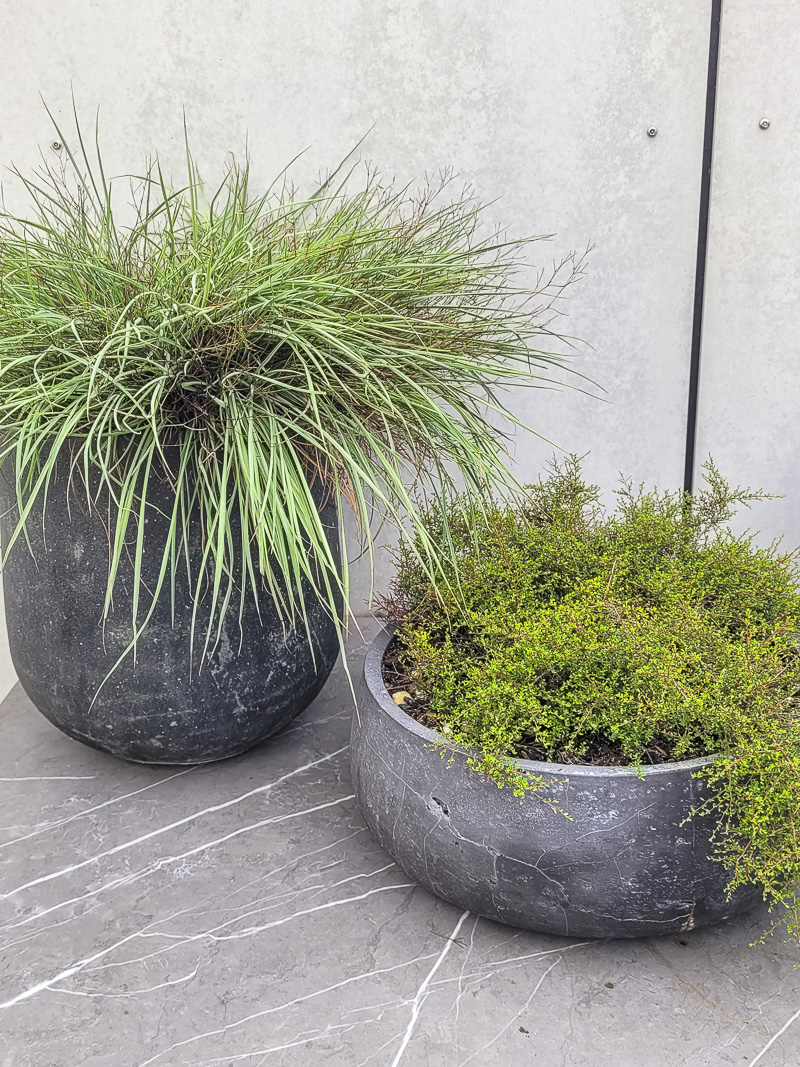
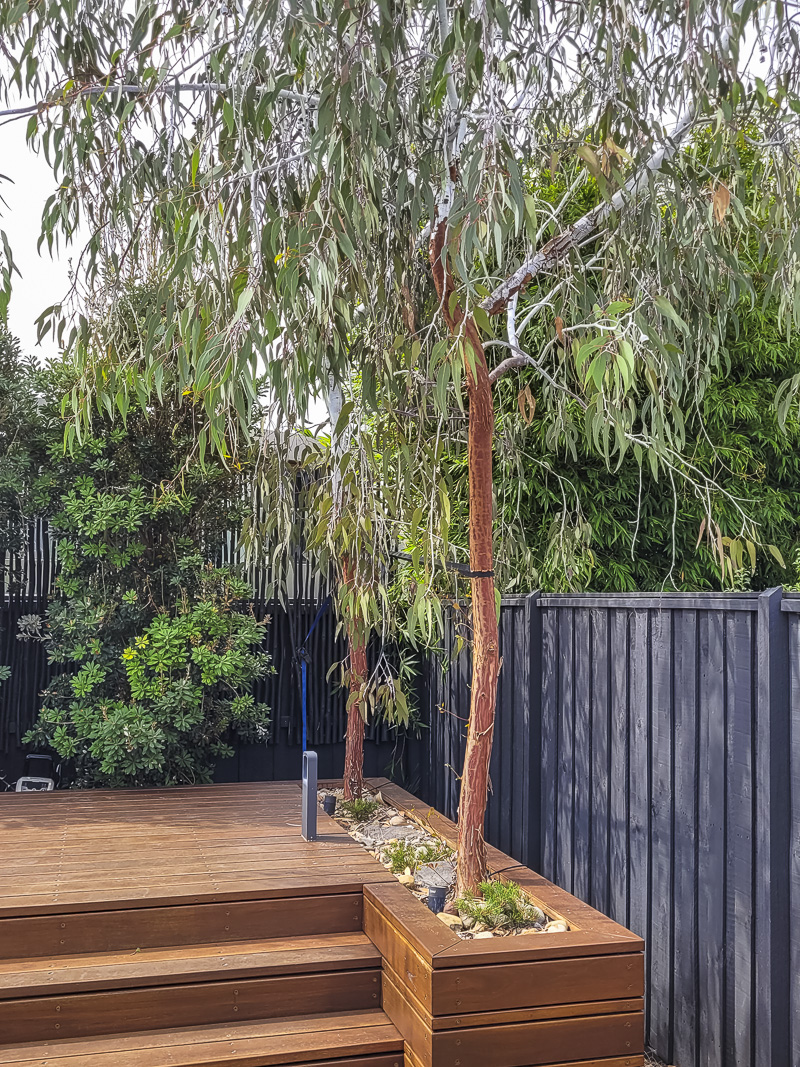
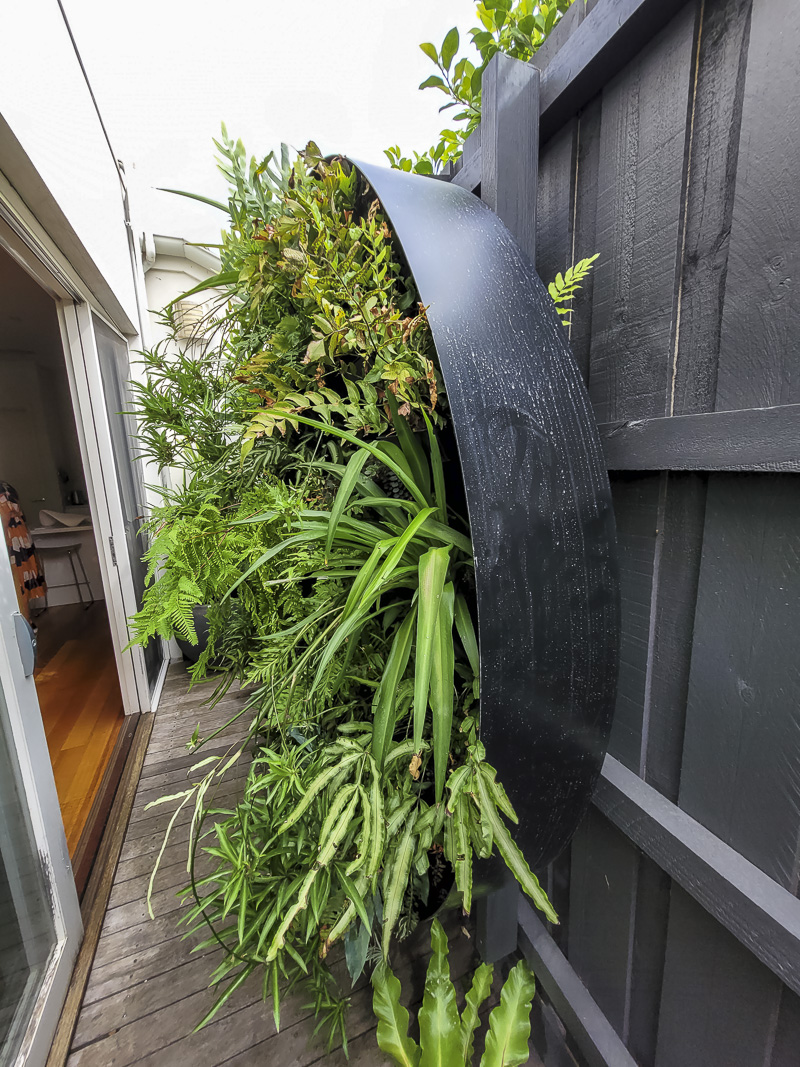

Small garden options in the van der Merwe garden in Melbourne, images Nicky Zanen
Going vertical
Consider ways to increase the area of garden available. Don’t overlook that you have walls and roofs that can become ‘green’ by using vertical or horizontal gardens. With this comes the problem of species selection to be resolved! You will find plenty of Aussie species that grow naturally and thrive in similar difficult conditions.
Now to the plants
These are just a few of many ways to plan a garden for a small space so that it is a fitting repository for a carefully selected plant palette. It is the plants that will bring life and vitality and with that change over time. Once again the principles of scale, simplicity, enclosure, views, sun/shade etc apply to influence the plant selection, layout and management.
For other stories on small native gardens and courtyards, see our Stories list.
 Australian Native Plants Society (Australia)
Australian Native Plants Society (Australia)